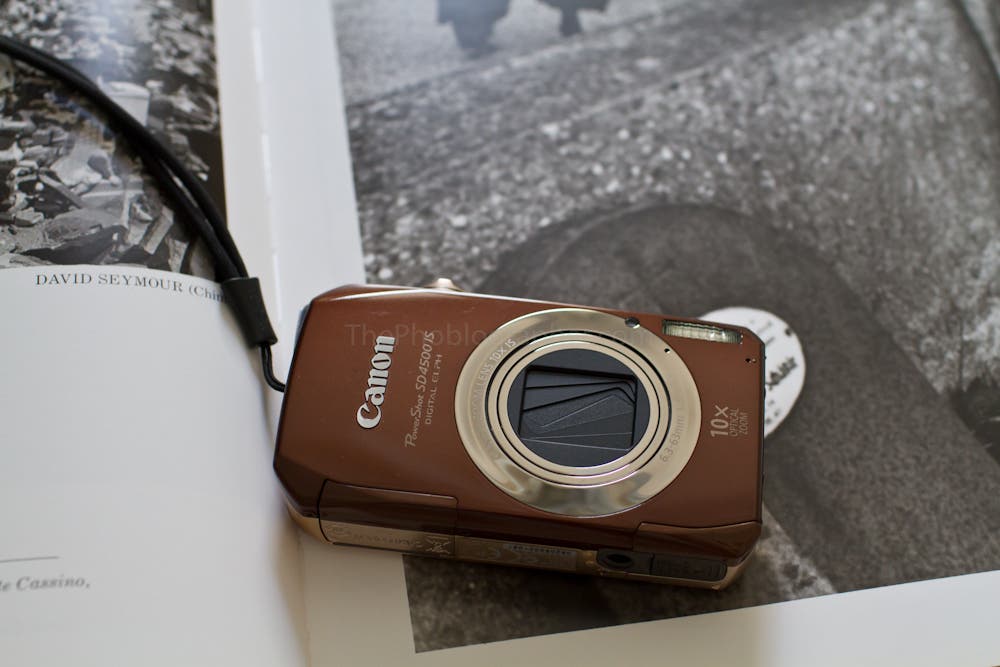At the launch of every new technology, the headlines release anguished cries: Film Is Dead. Point and Shoots Are Dead. DSLRs Are Dead. [Insert any form of photography with some history] Is Dead. I get it: headlines need a bit of drama or else even the great articles fall victim to aimless scrolling. But, if a photographer creating a daguerreotype in the 21st century can make headlines, then perhaps it’s time to stop giving old technology an expiration date. Take the new resurgence of old compact cameras, for example.
If there’s one piece of photo technology I thought would truly die, it’s the old point-and-shoot. I’m not talking about today’s compacts that offer a sensor, zoom, or underwater housing a smartphone can’t match. No, I’m talking about the compacts of the early 2000s, the tiny cameras with megapixels in the single digits and chintzy plastic bodies. The kind of cameras that (speaking from Gen Z personal experience) break from a single spec of sand getting into the lens.

And yet, it’s exactly those compacts that are returning. These old digital cameras are trending on TikTok, as are the direct flash, blurred, and sometimes discolored images they create. The trend is as much about the photo aesthetic as it is about taking a break from a constant connection to our smartphones. And as the New York Times explores, these cameras are seen as accessories to everything Y2K that’s making a comeback. If you have a 2000s-era compact gathering dust in a drawer, now is the time to unload it on eBay.
If the 2000s-era compact can make a comeback for the sake of a specific look, then anything is fair game for a revival, whether widespread or limited to a handful of photographers. The death of film has been hypothesized since the beginning of the digital camera, yet it remains as viable an artistic tool as a paintbrush. While I think some tech is better left in the past, if there’s a valid reason to revive an old camera, start digging.

Yes, we’ve run headlines before saying the DSLR is dead. I agree that investing in a system of DLSR bodies and lenses in 2023 doesn’t make sense for most photographers today. The only advantage of a DSLR right now is a more affordable price point and a plethora of used lenses to choose from. Even longer battery life and larger grips are getting easier to find in mirrorless.
But, ten or twenty years from now, will DSLRs offer a look that draws photographers or young adults looking for trendy accessories back? I don’t have a crystal ball handy, but I imagine any such future revival will still be as limited as the trend for 2000s-era compacts. After all, an old point-and-shoot probably isn’t going to get you more than $50 from eBay, even now with a resurgence. DSLRs don’t have the colors and feel that draws photographers to film. If anything, I can see future photographers picking up “vintage” DSLRs because many mirrorless cameras are already I-can-see-your-pores sharp, and too many modern lenses are eliminating flare.
As new technology emerges, old technology will inevitably fall from the mainstream. But does losing mainstream status mean the technology is ready to be buried? Not always. And when scrolling through Instagram photos that often start to feel the same, if there’s a good reason to revive old technology, then embrace that zombie camera. If it makes you happy to take photos with a 15-year-old camera, then shoot and be happy. While I wouldn’t mind seeing the compact cameras of my high school years stay in the past, if it gets people out of their phones and connecting with the photos they make, I’m not going to argue with it. I might cringe a little on the inside, sure. But, if I could make just one request, could we at least leave selective color buried in the past?



Leave a Reply